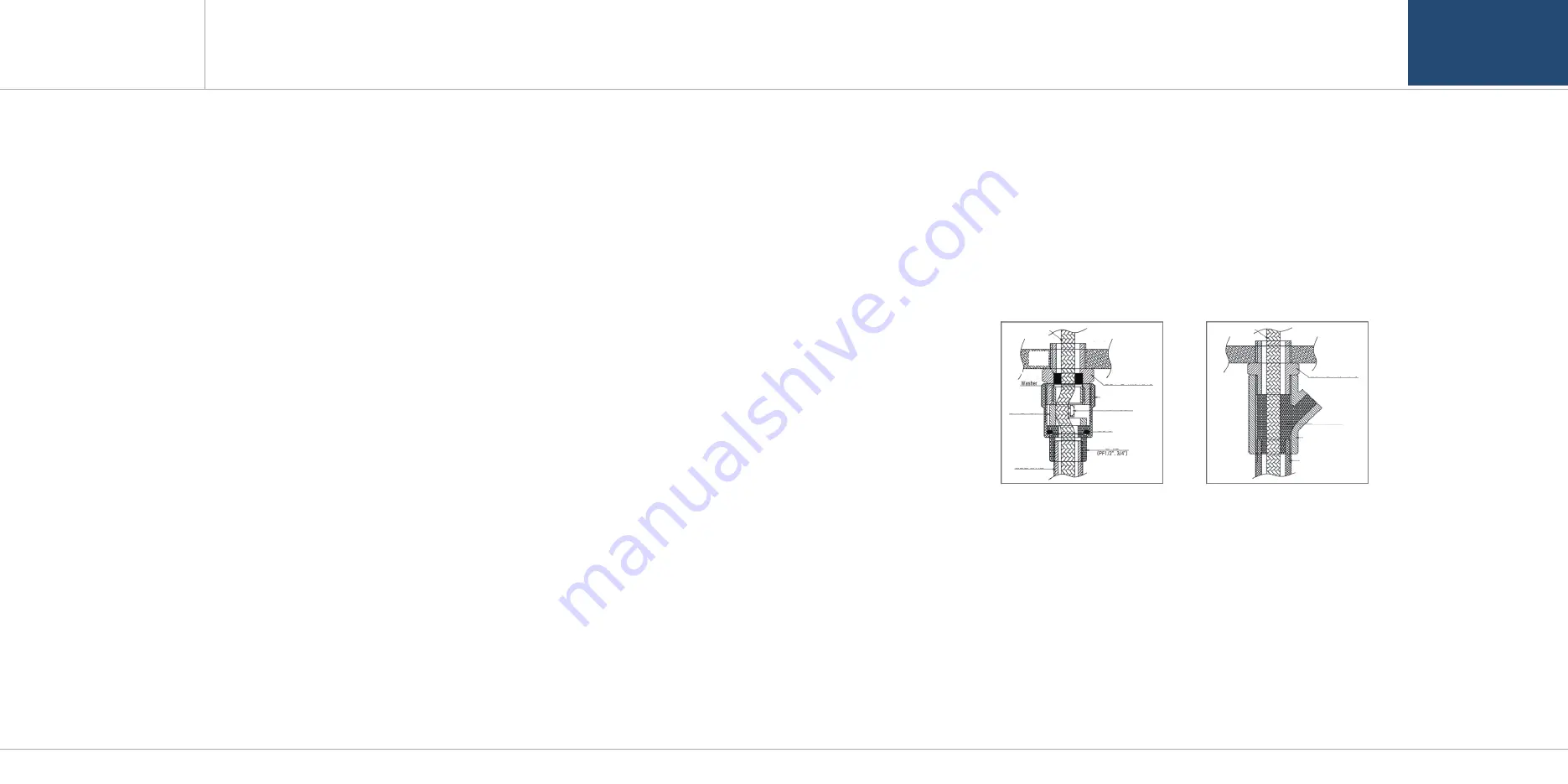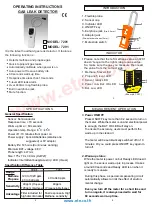
www.gastron.com
38
_
39
GTC-520F
Instruction Manual
9.1. Selecting a Place for Installation (Occupational Health & Safety Act Data)
A gas leak detector alarm shall be installed in the following places.
■ Around chemical equipment and accessories that have concerns of gas leak. This includes compressors, valves,
reactors, pipe joints, etc. installed inside and outside of a building that handle combustible and toxic materials.
■ Places that are easier for gases to stay such as areas around manufacturing facilities with ignition sources like
heating furnace, etc,
■ Areas around equipment for filling combustible and toxic materials.
■ Substations, panel rooms, control rooms, and etc. located within explosive area.
■ Other areas that are easier for gases to stay.
9.2. Selecting a Site for Installation (High-Pressure Gas Safety Control Act Data)
Gas detector of gas leak detector alarm must be installed as close to the areas with concerns of gas leakage as
possible. However, for areas where direct gas leakage is not expected but are easier for leaked gas to stay, the
detector must be installed at the point 1 of the following.
■ Gas leak detector alarm installed outside a building shall be installed at points where gas is likely to stay in
consideration to wind direction, wind speed, specific gravity of gas, etc.
■ Gas leak detector alarm installed inside a building shall be installed near the floor when the specific gravity of gas is
heavier than air and near ventilation of ceiling when it is lighter than air.
■ Alarm for gas leak detector alarm must be installed at sites where the gas detector is installed and workers are present.
9.3. Precautions during Installation
Avoid areas with electrical barriers such as rain water, etc. It is recommended to be installed in areas that are easier
to work in since regular maintenance is needed. Avoid areas with vibration or shock since they can affect output
values. Sensor part must be installed towards the direction of gravity.
■ This equipment has explosion-proof construction for internal pressure and belongs to GROUP II for gas and vapor
in general work sites and chemical plants. It can be used in ZONE 1 (ONE) and ZONE 2 (TWO) hazardous sites.
■ Allowable temperature is 85 C or below, which corresponds to T6.
■ Surrounding temperature is in a range of -20 °C ~ 50 °C.
■ Installation Height: 1,000 M below sea level
■ Relative Humidity: 5% ~ 99%
■ Installation Site: Indoor and Outdoor
■ Explosion Ignition Grade for the Gas or Vapor: Ex d IIC T6
■ During wiring work, use explosion-proof cable gland at cable inlet or tightly seal cable conduit during metal cable
wiring construction to prevent spread of flames in case of explosion or movement of gas, etc. through the cable
conduit within 50 mm. All materials including materials used for sealing of unused inlets must have safety
certificates!
■ When connecting the equipment with cable, screw thread must be tightened 5 threads or more.
■ Work in conditions satisfying other [Standards for Selection, Installation, and Maintenance, etc. of Explosion-
proof Electric Machine and Equipment Wiring, etc. at Work Site]
■ All materials used for cable inlet such as cable gland and sealing fitting, etc. and used as sealing unused inlets
must pass the verification!
9. Precautions before Installation
9. Precautions before Installation
[Figure 21. High-Pressure Packing Type]
[Figure 22. Y Sealing Compound]
Cable
Cable
Inside
Inside
Outside
Outside
Lead-in unit connector
Lead-in unit connector
Charging compound
Cable-fixing device
Pipe for piping
Cable-fixing device
Sealing ring
Sealing
ring
Connector
Pipe for piping
Compressed
element
Connector for fixing
compressed element


































